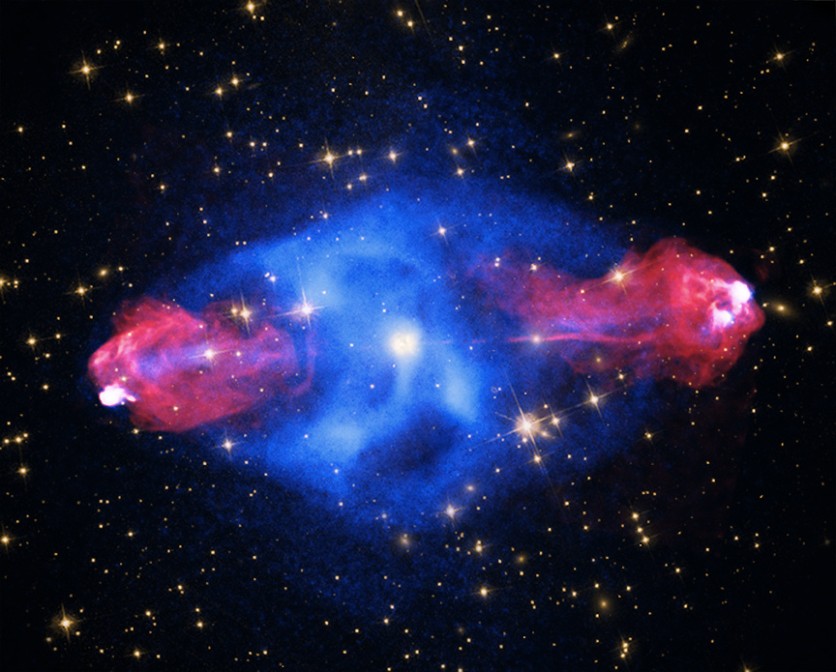Astronomers have reportedly identified the oldest known fossil radio galaxy, and it is hidden in the Abell 980 galaxy cluster.
As reported first by ScienceAlert, supermassive black hole activity caused the brightest galaxy in the cluster to erupt, sending enormous radio light bubbles into space.

Radio Galaxies
These recently discovered bubbles, also known as radio lobes or radio galaxies, are the oldest of their kind that astronomers have ever seen, according to a team of researchers led by Surajit Paul of Savitribai Phule Pune University in India.
A pair of younger lobes have also been discovered. The combined object is a rare example of a twin pair of lobes, indicating that the galaxy's supermassive black hole has erupted episodically, according to the second team of astronomers led by Gopal Krishna of the University of Mumbai in India.
Radio lobes, which are far larger than the galaxies from which they emerge and can reach millions of light-years, can impact the intergalactic medium or the flimsy gas between galaxies.
ScienceAlert noted that we could learn more about this medium, as well as the recurring, episodic activity of the supermassive black holes that produce them, by closely studying these formations.
Radio lobes are fairly abundant in the Milky Way. They are created when a supermassive black hole is in its active phase.
However, the issue is that they vanish too quickly for astronomers to notice them, and it's uncommon to discover examples older than 200 million years. Once detected, these artifacts can preserve important details about the circumstances surrounding their genesis.
Giant Metrewave Radio Telescope
The team searched through galaxy clusters using the Giant Metrewave Radio Telescope in India and they discovered one in Abell 980, a galaxy cluster around 2 billion light-years away.
They found a faint radio structure there, which they were able to date to be roughly 260 million years old and span 1.2 million light-years away.
The galaxy erupted once more after reaching the cluster's center, creating a second set of lobes. The astronomers also found a few double-double radio galaxies connected by two pairs of radio lobes.
Krishna and his team have dubbed these galaxies "detached double-double radio galaxies" because the parent galaxy of the two sets of lobes in Abell 980 has relocated, dividing the lobes.
Further evidence for the recurrence of supermassive black hole eruptions may be provided by additional, more sensitive radio measurements in the future, according to ScienceAlert.
Related Article : NASA's Hubble Space Telescope Captures 'Orion Nebula's Dreamy Cloudscape' With Over 500 Exposures!
This article is owned by Tech Times
Written by Joaquin Victor Tacla
ⓒ 2025 TECHTIMES.com All rights reserved. Do not reproduce without permission.




